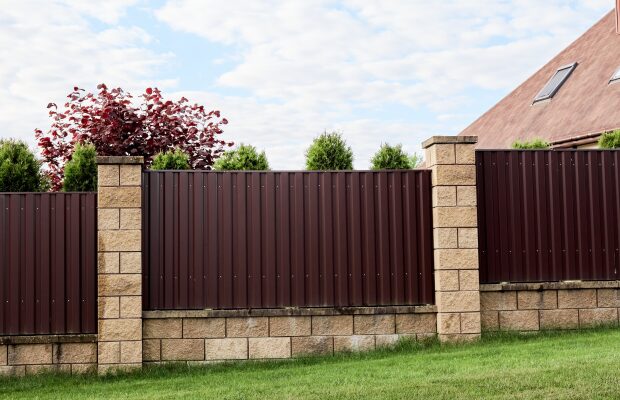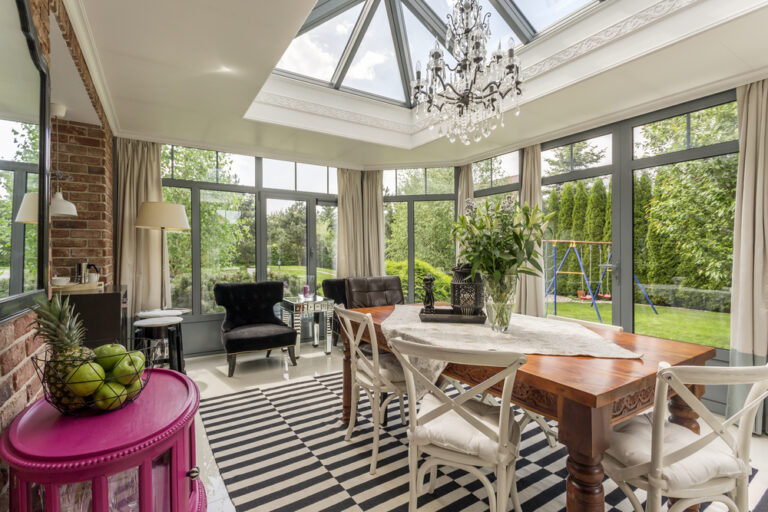One of the most common decisions growing families face is whether to move to a bigger home or extend their current property.
A great way to add space (and potential value) to your home is through a loft conversion.
But where do you start?
This guide tells you everything you need to know about converting your loft space, from the different types of loft conversion to rules on planning permission…
Are loft conversions a good idea?
A loft conversion can be a great way to create extra space in your property without extending out and using up external space.
Many loft conversions feature a large master bedroom and en-suite, but you could also create a home office or even a home cinema!
Can my loft be converted?
If you’re considering a loft conversion, the first thing to establish is whether your roof space is suitable for conversion.
If you live in a street with similar properties to yours, have a look and see if any of your neighbours have converted their loft space.
This should tell you whether your own loft can be converted.
How suitable your space is, however, will depend on:
1. Structure and roof type
The biggest impact on your property’s suitability for a loft conversion will be from the type of roof you have.
Depending on when your property was built, you may have rafters or trusses.
Rafters run along the edge of the roof space and leave most of the space in the middle hollow – meaning an idea space for conversion.
Trusses, however, are set in a cross section through the loft space, meaning they can be difficult, but not always impossible, to convert.
If you have a truss roof, you may need additional structural support to replace the trusses that will be taken out and that will mean much bigger costs.
A surveyor will also need to assess if your property’s foundations and structure can hold the additional weight of a loft conversion.
2. Head clearance
Loft conversions ideally require a minimum head clearance of 2.2 metres.
To assess if your loft is high enough, run a tape measure from the floor up to the highest point.
If it’s 2.2 metres, your loft should be suitable for conversion.
Some period properties built before the early 1900s had shallower roof heights, but most UK homes built after 1930 should have adequate loft space head clearance.
3. Stairs
One of the most complex parts of a loft conversion is constructing an additional staircase up to the roof space.
Because lofts are often narrow, it means putting in a narrower staircase – and this can cause problems getting large items up into your newly converted space.
Think about how you want to use the space and if you’ll need to factor in a bespoke staircase design.
4. Other obstacles
Depending on when your property was built, your loft space may have major obstacles like a water tank or chimney stack that will need to be dealt with prior to your conversion.
Removal of a water tank will mean major plumbing requirements and if your home has a chimney stack, removing it will either be extremely costly or impossible if your property is linked to a neighbour’s.
Although chimneys can encroach on your loft space, they can also become a spectacular feature, so all is not lost if you have one and want to press ahead with your loft conversion.
Types of loft conversions
Once you’ve established that your loft space is suitable for conversion, you’ll need to consider the type of conversion you’d like.
1. Roof light conversion
If you’re on a tight budget, a roof light conversion could be the best option for you.
However, for a roof light conversion to work, you’ll need to have a loft with enough room and height already in place.
Roof light conversions simply add in skylight windows, a solid base floor and staircase, with no alterations to the pitch or shape of the roof.
This means they can be cheaper, but unsuitable for some properties.
2. Dormer conversion
Dormer conversions are good options for most properties with sloped roofs.
However, they can take time (and money) to complete because of the need for additional structural changes.
Dormers stick out from the slope and are usually completed with flat roofs, meaning they can create good head room and floor space.
3. Hip to gable conversion
Hip to gable conversions can create more internal space but are more expensive that dormer conversions.
A hip to gable project will extend the slope of the side roof outwards to create a vertical gable wall.
These types of loft conversion are only suitable for detached or semi-detached homes due to most of the work being done on the side of the roof.
4. Mansard conversion
Although mansard conversions can create the most internal space, they are generally the most expensive type of loft conversion.
A mansard conversion alters the angle of the entire roof slope, creating an almost vertical look with only a small pitch on top.
Mansards don’t always look as natural as other types of loft conversion, but the space they create can be a real wow factor interior.
How disruptive is a loft conversion?
While loft conversions can be disruptive, they tend to have less of an impact that side or rear extensions.
Because loft spaces that are converted aren’t already being used as a living space, work can generally continue while you use the space on the lower floors as you normally would.
However, if your loft space doesn’t have enough head clearance and you’re lowering the floors below to create the space required, this can have a far greater impact in terms of disruption.
Put simply, the more complex your loft conversion is, the more disruptive it’s likely to be.
How much does a loft conversion cost?
The overall cost of your loft conversion will depend on which type of conversion you choose, the finish you desire and the complexity of the work.
Roof light conversions are generally the cheapest option, coming in at between £15,000 to £20,000, according to myjobquote.co.uk.
Dormer conversions are more expensive, averaging between £30,000 and £60,000, while a hip to gable project could cost between £40,000 and £65,000.
Mansard conversions are the most expensive and could cost up to £70,000, depending on the size of the roof.
Will a loft conversion add value to my home?
Research by Nationwide revealed that a loft conversion could add as much as 20% to the value of a three-bedroom home.
Adding additional floor space, another bedroom and bathroom, meanwhile, is sure to make your property more appealing to potential buyers.
Do you need planning permission for a loft conversion?
Most loft conversions fall under permitted development rights, meaning no planning permission is required.
However, there are certain restrictions under permitted development, including:
- Materials used for the conversion must be similar in appearance to the existing property
- The roof space can only be enlarged by a volume of no more than 40 cubic metres (terraced homes) or 50 cubic metres (semi or detached homes)
- The roof must not exceed its current height
- The section of roof that fronts a highway cannot extend beyond the existing slope
- Side-facing windows must be obscured glazing
For a full list of rules under permitted development, always speak to your local planning department before starting work.







